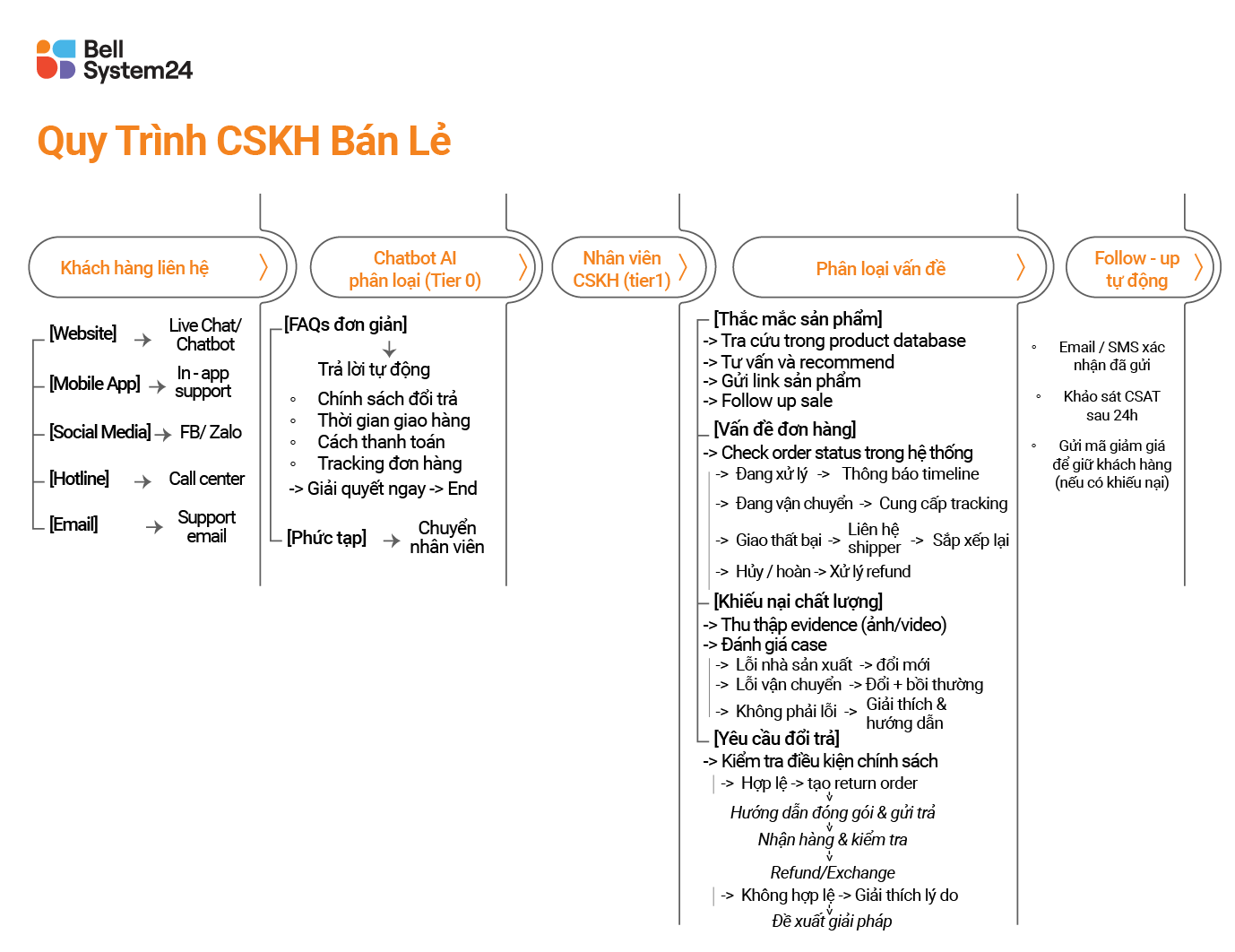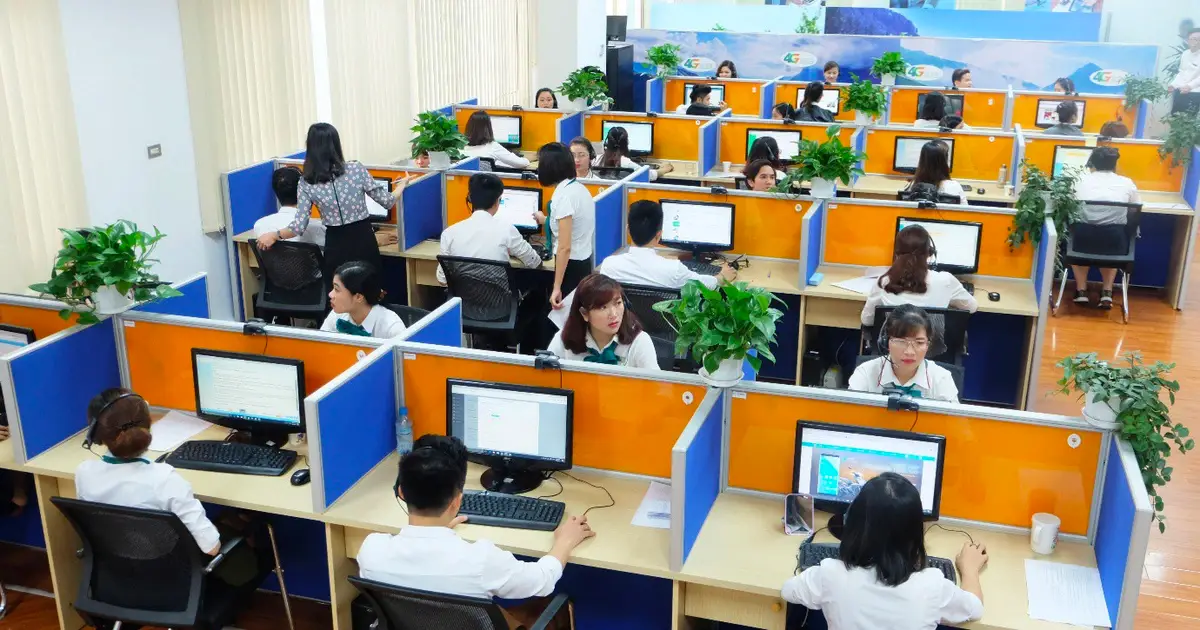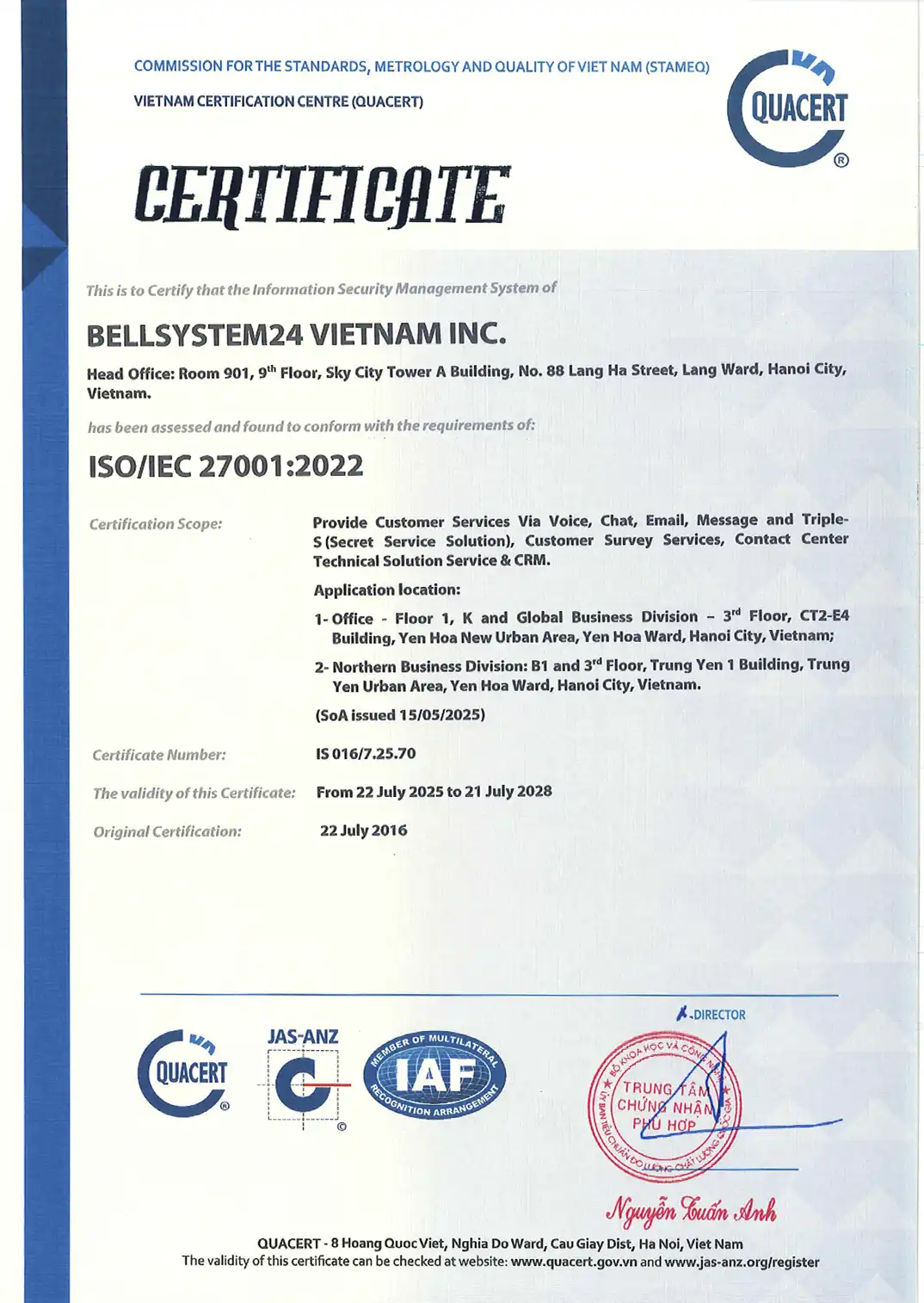In today's fiercely competitive business environment, the quality of customer service has become a decisive factor in the success or failure of any business.
According to Microsoft's research, 96% customers believe that customer service is an important factor in choosing and maintaining brand loyalty.
Customer service training is not just a simple activity, but a key strategy that helps businesses build a sustainable competitive advantage.

Why is customer service training so important?
Businesses with professional customer service training programs often see revenue growth of 4-81% compared to their competitors. Not only that, but the cost of retaining an existing customer is only 1/5 of the cost of attracting a new customer, highlighting the importance of maintaining good relationships with customers through high-quality service.
Develop Customer Service Training Plans and Procedures
Step 1: Assess customer service training needs
Before construction Customer Service Training ProcessThe first thing to do is to objectively and comprehensively assess the current situation; one cannot apply a one-size-fits-all approach to every business.
Actual analysis
Conduct an assessment customer service skills of each employee through various methods such as:
- Direct observation
- Call recording (with consent)
- One-on-one interview.
Evaluation methods must be tailored to the specific characteristics of the business. Focus on the core skills of customer service employees, such as communication, listening, problem solving, and product knowledge.
Customer feedback survey
Collect feedback from customers through channels such as email, phone, social media, and online review platforms. Pay particular attention to recurring complaints and suggestions for improvement from customers.
Some indicators that can be included in the assessment are: CSAT, NPS.
Employee performance analysis.
Review key metrics for customer service representatives such as:
- Average Handling Time (AHT)
- First Call Resolution (FCR) rate
- Customer Satisfaction Score (CSAT)
- Net Promoter Score (NPS)
These figures will provide an objective view of strengths and areas for improvement, avoiding assessments without metrics or evidence.
After gathering sufficient data through the above steps, analyze it to find the "intersection" between the actual needs of the business and the current capabilities of employees in order to develop appropriate training modules and programs.
At BSV, the training path for customer service representatives is standardized from the start of their employment until they reach higher levels. Additionally, during the course of their work, if there is a decline in quality or a need to update their knowledge (upskilling), training will be provided immediately thereafter.
Step 2: Design a comprehensive customer care training program
Define clear objectives
Training objectives should be set specifically, adhering to the S.M.A.R.T. principle so that they can be measured.
For example:
- Increase CSAT score from 7.5 to 8.5 within 3 months
- Reduce the average processing time to under 5 minutes
- Or achieve an initial resolution rate of 85%.
Core training content
- Effective communication skills: This is the foundation of all customer interactions. Employees need to learn how to use positive languageAdjust your tone to suit each situation and express empathy sincerely.
- Active listening skills: Not only listen to what customers say, but also understand the emotions and real needs behind their words. This includes asking open-ended questions, summarizing the issue, and confirming understanding.
- Handling complaints and difficult situations: Train employees to remain calm, demonstrate understanding, find win-win solutions, and turn dissatisfied customers into loyal customers.
- Product/service knowledge: Employees must have a thorough understanding of all aspects of the product/service in order to provide accurate advice and build trust with customers.
Diverse training methods
- In-person training: Create a space for direct interaction between instructors and students, facilitating discussion and immediate question-and-answer sessions.
- E-learning: Suitable for conveying theoretical knowledge, allowing employees to learn at their own pace and review multiple times.
- Role-play and simulation: Create realistic scenarios for employees to practice, helping them better prepare for real-life situations.
- On-the-job training: Learn directly from experienced colleagues by observing and practicing in a real work environment.
Step 3: Develop a step-by-step training process
Orientation phase (first 2-3 days)
Make a good impression from day one by introducing the corporate culture, vision, mission, and core values. New employees need to clearly understand their position in the customer value chain and the importance of the customer service role to the company's overall success.
Core Training Phase (1-2 weeks)
This is the most important stage, focusing on imparting basic skills and specialized knowledge. Use a combination of methods such as presentations, group discussions, case studies, and practical exercises.
Advanced Training stage (ongoing)
After mastering basic skills, employees need to be trained in advanced skills such as up-selling, cross-selling, handling VIP customers, and using advanced CRM tools.
Step 4: Customize the route for each location
- New employee: Focus on getting familiar with the environment, learning basic procedures, and developing basic communication skills.
- Experienced staff: Enhance professional skills, learn how to handle complex situations, and develop mentoring abilities.
- Team Leader: Enhance leadership skills, performance management, coaching, and team spirit building.
- Manager: Focus on customer service strategy, resource management, data analysis, and building a customer care culture.
Step 5: Measure and evaluate effectiveness
Measuring effectiveness customer service training is a measure to evaluate training effectiveness, which should be conducted regularly through specific KPIs:
- Customer Satisfaction Score (CSAT): Measure customer satisfaction levels directly
- Net Promoter Score (NPS): Assessing customers' ability to recommend services
- First Call Resolution (FCR): First contact resolution rate
- Average Handle Time (AHT): Average processing time per request
- Customer Retention Rate: Customer retention rate
See also: Develop KPIs for customer service representatives and a template
Building a culture of continuous learning
Customer Service Training It is not a one-time activity but needs to be maintained regularly. Below are some ideas that BSV often applies:
- Organize monthly sharing sessions for employees to share experiences, discuss challenging cases, and learn from each other.
- Build a rich training resource library with video tutorials, case studies, FAQs, and best practices.
- Encourage employees to self-study and develop through online courses, webinars, and specialized books.
Construction Customer Service Training Plan Effectiveness requires a serious investment of time, resources, and dedication. However, the benefits are immense: greater customer satisfaction, increased employee loyalty, sustainable revenue growth, and a strengthened brand.







